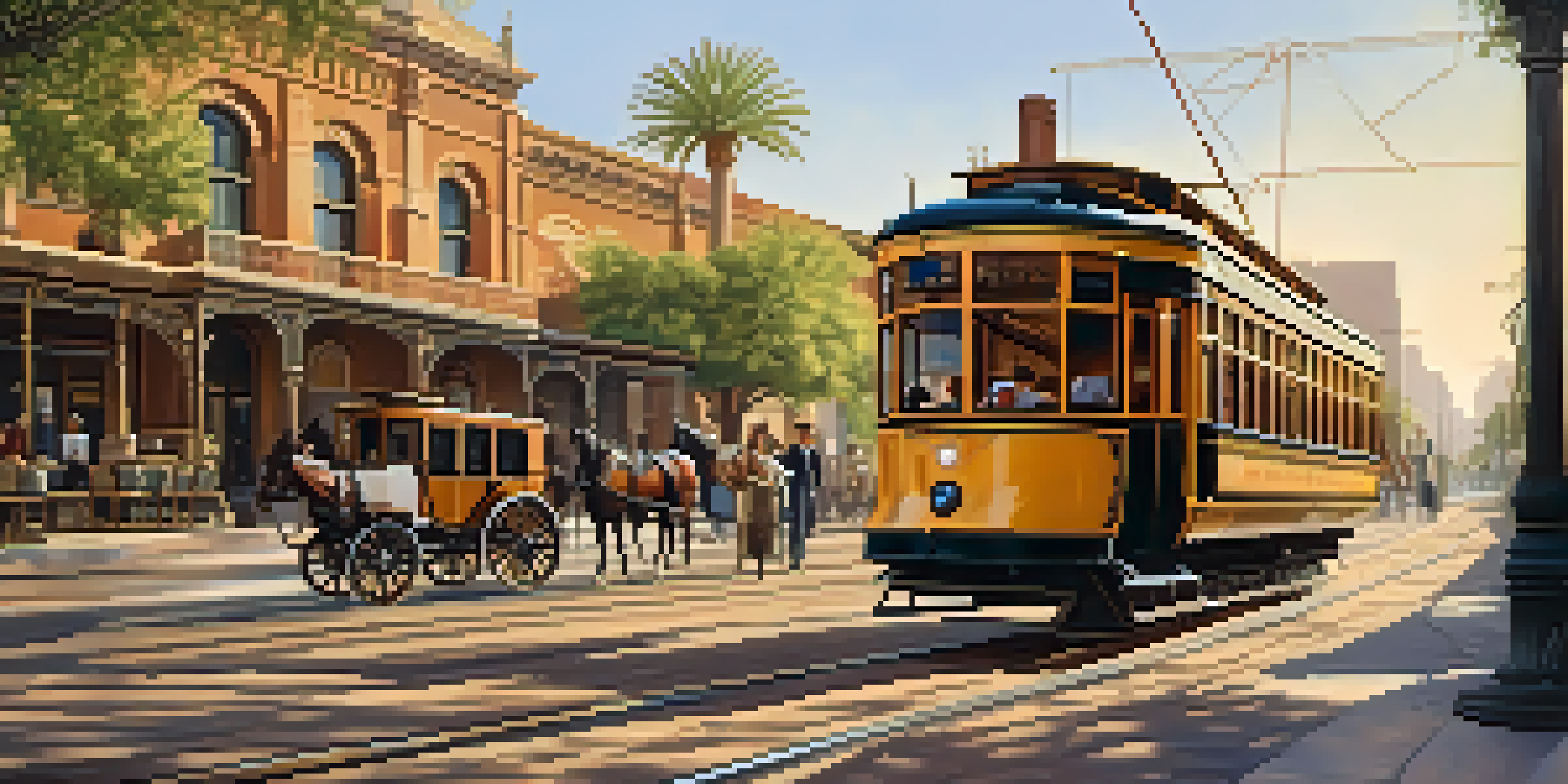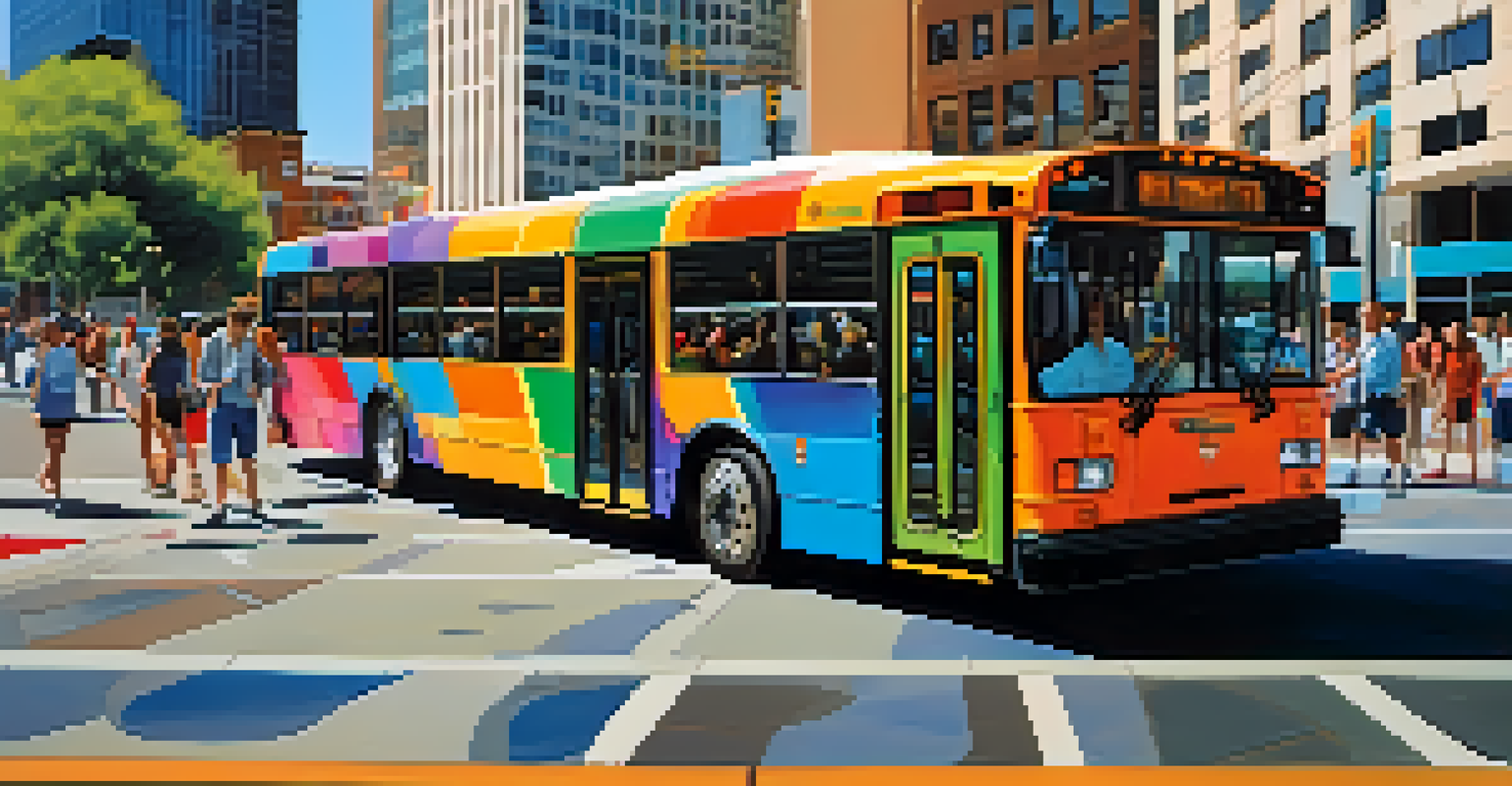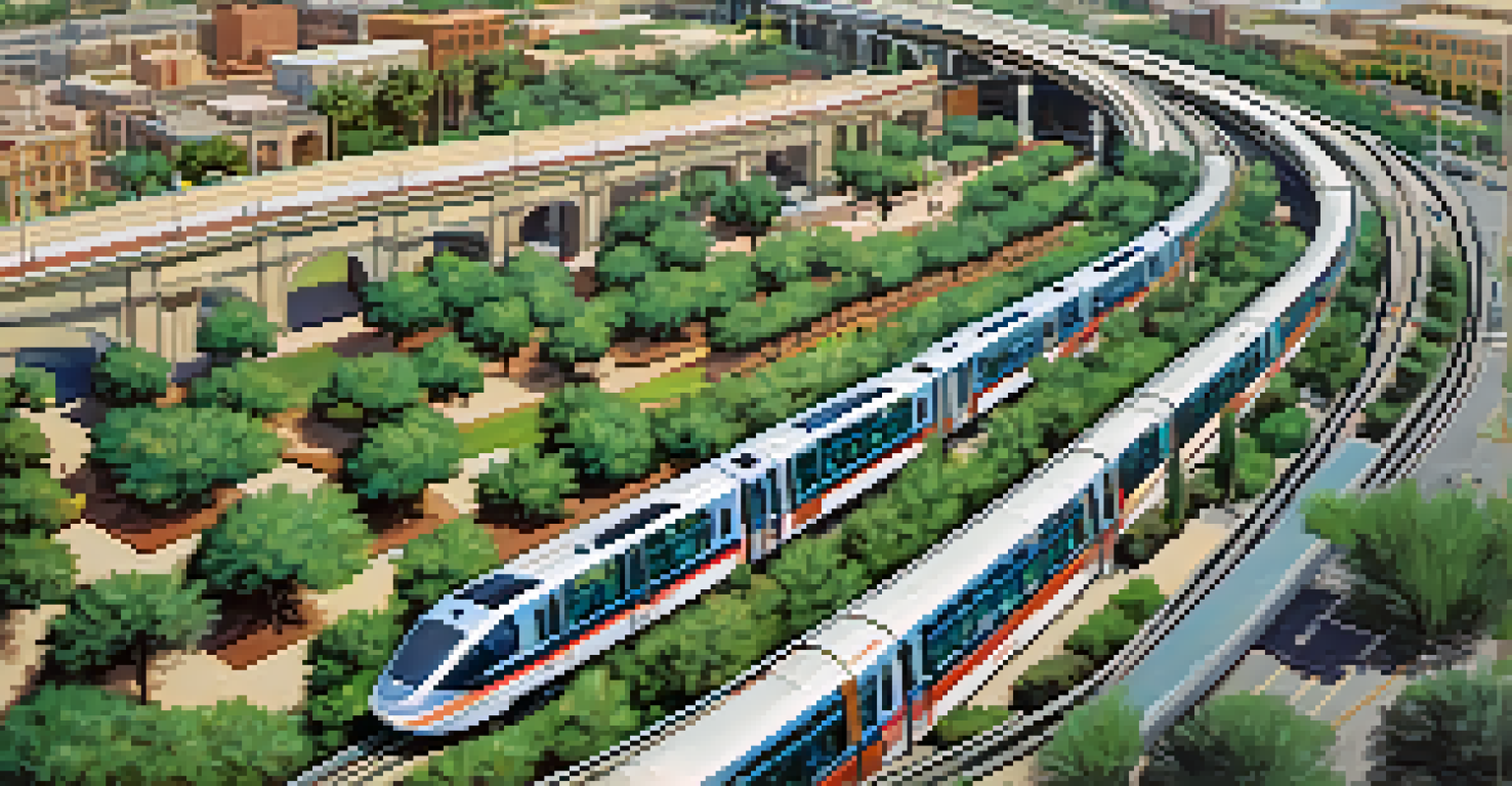The Origins of Public Transportation in Phoenix: A Historical Review

The Early Beginnings of Public Transport in Phoenix
Public transportation in Phoenix began in the late 19th century, reflecting the city's growth and evolving needs. The first form of public transport was the horse-drawn streetcar, introduced in 1887, which connected key areas of the burgeoning city. This early system was vital for residents, enabling them to travel more easily to work, schools, and social gatherings.
Public transport is not just a way to get from point A to point B; it is the lifeblood of a city, connecting its people and enabling economic growth.
As Phoenix expanded, the demand for efficient transport increased, leading to the establishment of electric streetcars in the early 1900s. These electric streetcars offered a faster and more reliable means of transportation compared to their horse-drawn predecessors. The introduction of this technology not only improved accessibility but also encouraged further urban development.
By the 1920s, the streetcar lines had expanded significantly, creating a network that facilitated both residential and commercial growth. As neighborhoods grew, so did the reach of the transit system, helping to shape the city's landscape. This period marked the foundational steps towards a more integrated public transport system in Phoenix.
The Rise of Buses and Their Impact
With the decline of streetcars by the 1940s, buses began to take center stage as the primary mode of public transport in Phoenix. The first bus service was launched in 1940, quickly adapting to the changing needs of the population. Buses offered a flexible and cost-effective solution, allowing for routes that could easily be adjusted to match urban development.

The shift to buses also reflected broader trends in American transportation, where personal vehicles became increasingly popular. Despite this change, the bus system maintained its importance, connecting communities and providing essential services to those without access to cars. This adaptability helped sustain public transport as a viable option for many residents.
Public Transport's Historical Evolution
Phoenix's public transportation has transformed from horse-drawn streetcars in the 19th century to an integrated bus and light rail system today.
By the 1960s and 70s, the bus network had grown to include numerous routes, facilitating easier access to schools, businesses, and recreational areas. The system was continually re-evaluated to meet the demands of an evolving city, demonstrating the resilience of public transport in the face of changing societal trends.
Major Developments in the 1980s and 1990s
The 1980s marked a pivotal time for public transportation in Phoenix, with significant investments aimed at modernizing the existing bus system. During this decade, the city began to focus on enhancing service quality and increasing ridership. Upgraded buses and improved scheduling helped make public transport a more attractive option for residents.
A great city is a city that can move its citizens, and public transportation is the essence of that movement.
In the 1990s, the city initiated plans for a light rail system, recognizing the need for a more comprehensive transport solution. This transformative project aimed to alleviate traffic congestion while providing a reliable alternative to car travel. By introducing light rail, Phoenix sought to create a more sustainable future for its growing population.
The light rail project, which officially began service in 2008, represents a significant shift in the public transportation landscape of Phoenix. It not only serves as a mode of transport but also as a catalyst for urban development, encouraging businesses and residential areas to flourish along its routes.
The Role of Public Transportation in Urban Development
Public transportation has played a crucial role in shaping urban development in Phoenix, influencing where people live and work. The integration of bus and light rail systems has made it easier for residents to access jobs, education, and services, thus driving economic growth. Strategic planning around transit routes has encouraged higher density development in key areas, promoting sustainability.
Moreover, the convenience of public transport has led to increased property values in areas served by transit. This phenomenon is evident in neighborhoods along the light rail, where investment and revitalization have surged. As public transport continues to evolve, it remains a key factor in planning for future growth and environmental sustainability.
Impact on Urban Development
Public transportation in Phoenix has significantly influenced urban development, promoting accessibility and increasing property values in transit-served areas.
The ongoing development of transit-oriented projects demonstrates the city's commitment to creating a livable and connected environment. By prioritizing public transportation, Phoenix aims to reduce reliance on personal vehicles, minimize traffic congestion, and enhance the overall quality of life for its residents.
Current Challenges Facing Public Transportation
Despite significant advancements, public transportation in Phoenix faces several challenges that need to be addressed. One of the primary issues is funding, as maintaining and expanding services requires a consistent financial commitment. Economic fluctuations can impact budgets, leading to potential cuts in services or fare increases that deter ridership.
Additionally, the city's rapid growth presents logistical challenges for public transport systems. As neighborhoods expand and populations increase, ensuring that transit services meet the needs of all residents becomes increasingly complex. This necessitates ongoing assessments and adjustments to routes and schedules to ensure accessibility.
Lastly, public perception plays a crucial role in the success of transportation systems. Many residents still view public transit as less convenient than personal vehicles, leading to lower ridership rates. Overcoming these perceptions and promoting the benefits of using public transport is essential for encouraging more people to make the switch.
Innovations Shaping the Future of Transit
As we look to the future, technological innovations are poised to reshape public transportation in Phoenix. The integration of smart technology, such as real-time tracking and mobile ticketing, enhances the user experience by providing riders with more information and convenience. These advancements can attract a younger demographic who values technology-driven solutions.
Moreover, electric and autonomous vehicles are emerging as viable options for public transport systems. The potential for electric buses and self-driving shuttles could reduce emissions and operational costs, making public transit more sustainable. As these technologies develop, they present exciting opportunities for improving the efficiency and appeal of public transport.
Challenges and Future Innovations
Despite advancements, Phoenix faces challenges such as funding and public perception, but technological innovations promise to enhance the transit experience.
The ongoing collaboration between city planners, transportation agencies, and the community is crucial in driving these innovations forward. By engaging with residents and addressing their needs, Phoenix can create a public transport system that is not only efficient but also responsive to the changing dynamics of urban life.
Looking Ahead: The Future of Public Transportation in Phoenix
The future of public transportation in Phoenix is bright, with ongoing efforts to expand and enhance services. As the city continues to grow, the need for a robust transit system will only increase, making it imperative to invest in sustainable solutions. The focus on public transportation aligns with broader environmental goals, promoting a cleaner and more efficient urban landscape.
Community engagement will play a pivotal role in shaping the future of transit in Phoenix. By listening to the needs and concerns of residents, planners can develop strategies that ensure public transportation remains accessible and relevant. This collaboration is key to fostering a sense of ownership and pride among the community.

Ultimately, the goal is to create a public transportation system that not only meets the needs of current residents but also anticipates future demands. With a commitment to innovation and sustainability, Phoenix can set a precedent for other cities looking to enhance their public transit offerings, ensuring a connected and thriving community for generations to come.